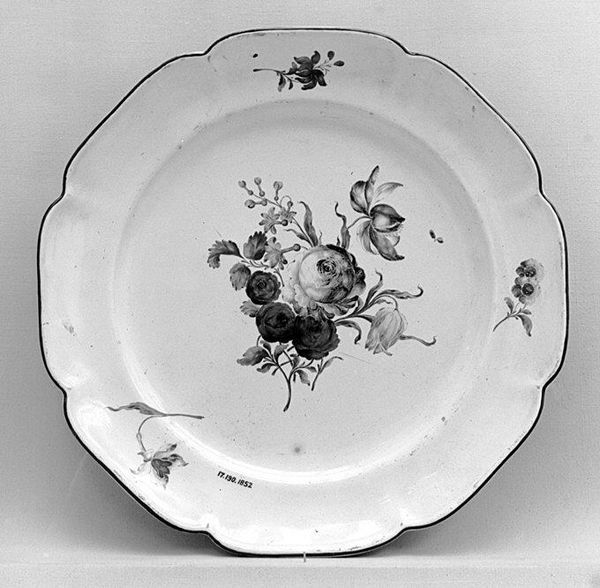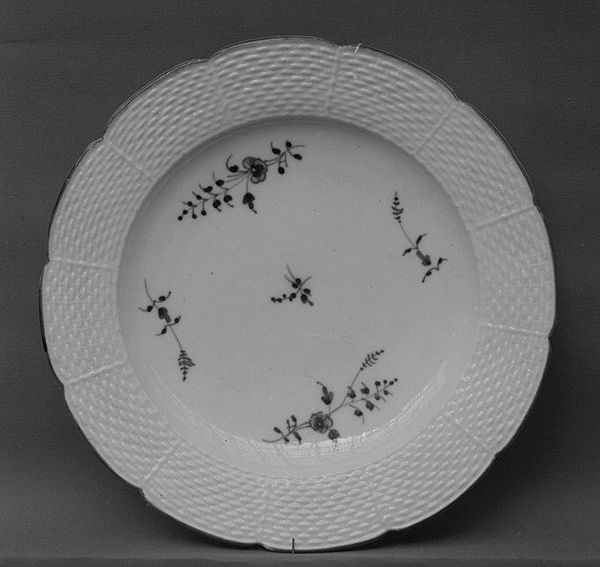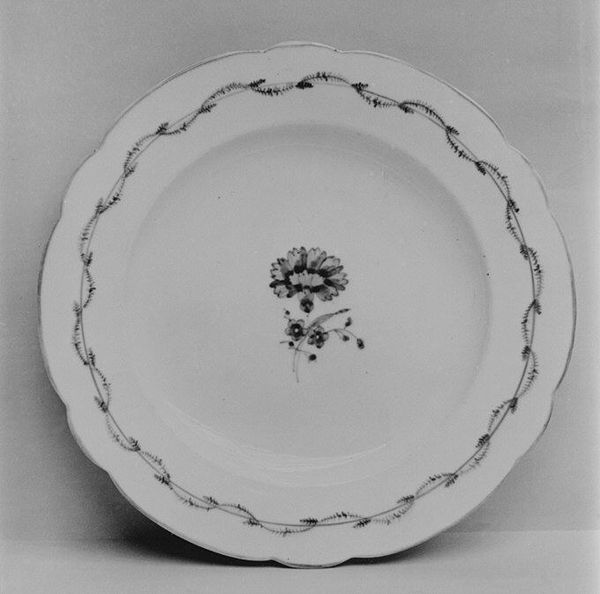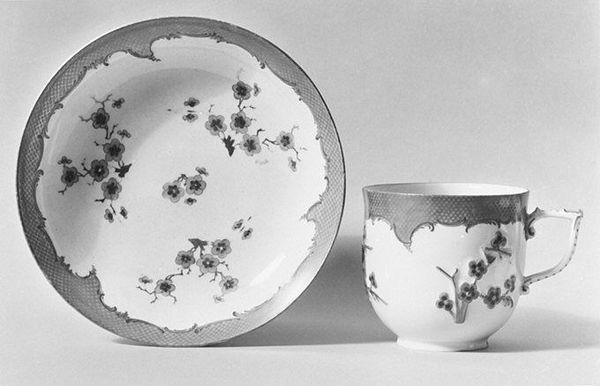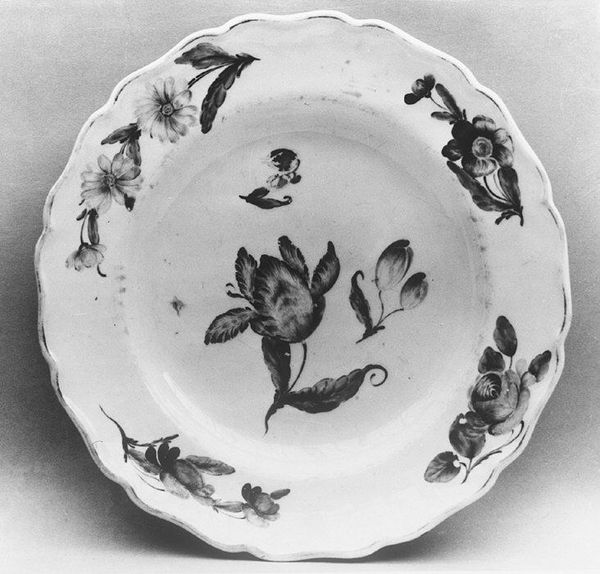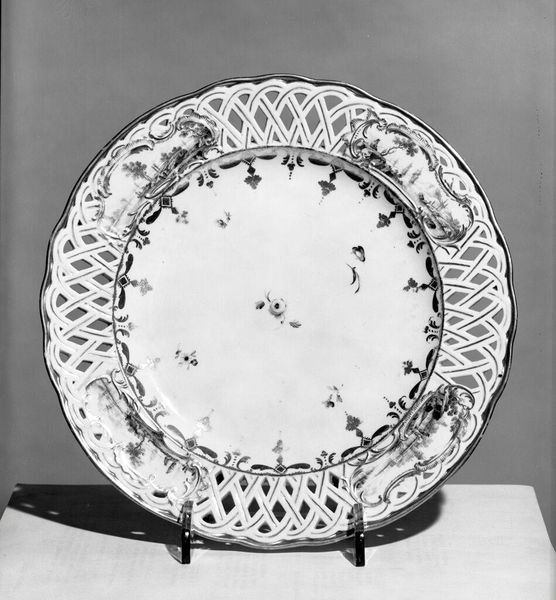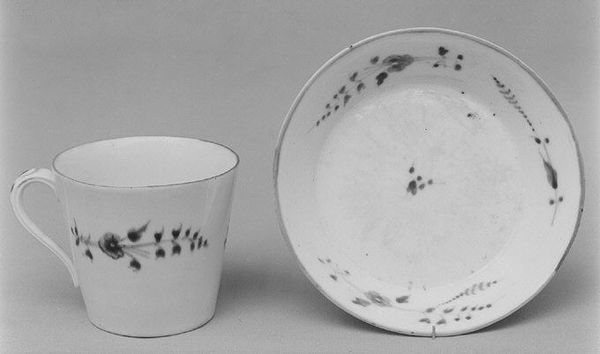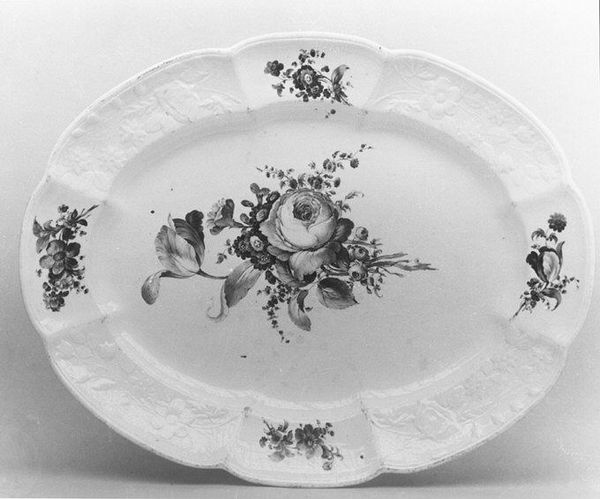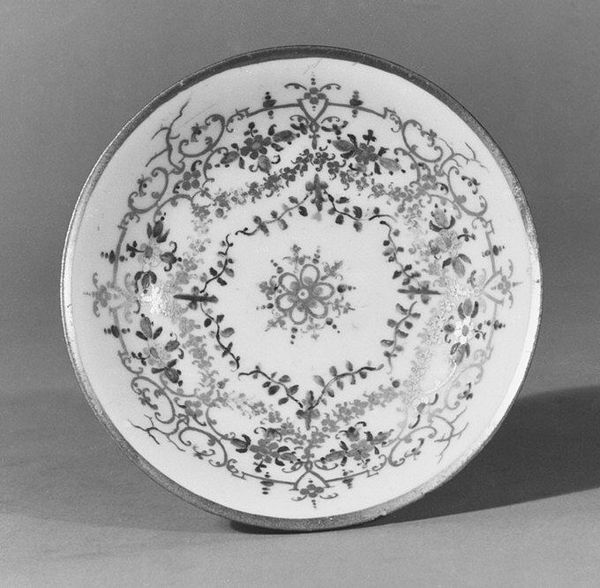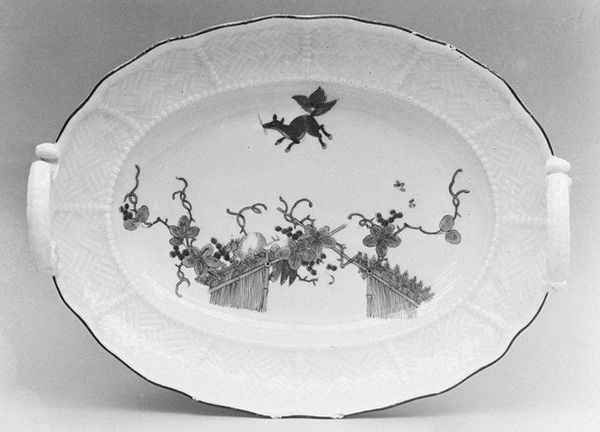
ceramic, porcelain, sculpture
#
ceramic
#
porcelain
#
sculpture
#
decorative-art
#
rococo
Dimensions: Diameter: 5 3/8 in. (13.7 cm)
Copyright: Public Domain
Editor: So, here we have a porcelain saucer from the Saint-Cloud factory, made sometime between 1720 and 1740. It’s quite small, delicate, and...a little unsettling. The bugs are realistically rendered, yet also feel a bit like decorations. What are your thoughts? Curator: I see a reflection of societal anxieties within this seemingly innocuous object. Rococo, despite its emphasis on ornamentation and pleasure, was also a period grappling with profound shifts in social order. How might we interpret the depiction of insects, typically considered undesirable, crawling on a surface intended for consumption and leisure? Editor: That’s a great point. It disrupts the idea of a purely decorative, pleasant object. Curator: Exactly! These images can serve as a commentary on class and power. Porcelain itself was a luxury item, highly prized and symbolic of wealth. The inclusion of insects—a reminder of nature's indifference to social hierarchies—could be seen as a subtle critique of aristocratic excess and privilege. Do you see any connection to gender here? Editor: Hmm, maybe the delicacy of the porcelain and the subject of adornment links it to femininity? It feels tied to traditional domestic roles. Curator: Precisely. Consider how the "feminine" sphere has historically been associated with both beauty and decay, the ornamental and the "unclean". These bugs become potent symbols when considered through that lens. They disrupt any straightforward celebration of wealth. What have you noticed exploring this piece? Editor: It makes me think about how even seemingly decorative objects can hold complex, even subversive meanings. Curator: Yes. By looking at these historical and social contexts we gain so much insight. Thanks for exploring this with me!
Comments
No comments
Be the first to comment and join the conversation on the ultimate creative platform.
